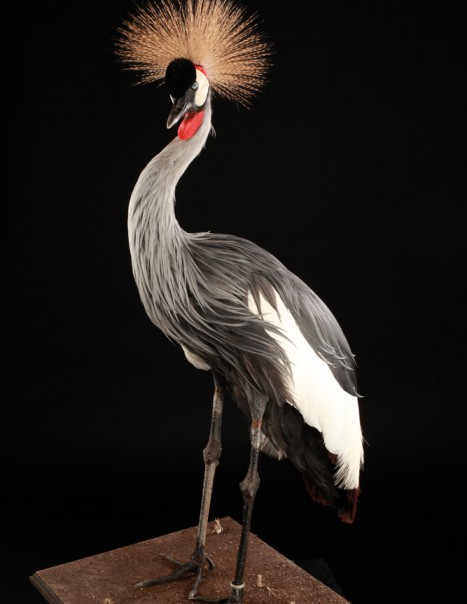Black Crowned Crane – Balearica pavonina
These cranes cry while flying and during courtship. They emit soft cooing with chicks. It frequents grassy and moist mixed habitats with shallow water in flood plains, rice fields, wet crops and upland fields in West Africa, large marshes and wet meadows, lakes, rivers and ponds. It nests and feeds into the highest fields, but near wetlands.
It eats insects, invertebrates, molluscs, crustaceans, fish, amphibians, reptiles, plant materials such as seeds of several species of plants, wild and / or cultivated. It pecks and rarely digs with its beak.
Before mating, one of the two birds emits a low cry while lifting the wings with slightly arched body forward. The couplings are repeated for several weeks before laying.
During the nesting, both parents defend the territory and drove off site all intruders that arise. The breeding season is between July and October, according to the rainy season. Both sexes build a circular platform with grasses and sedges, often placed along the boundaries or within the wetlands with dense vegetation. The female lays 2-3 eggs. Both parents incubate for about 28-31 days, the female especially at night, and then they incubate each in turn throughout the day. The chicks are precocial and follow their parents soon after hatching. They are feathered between 60 and 100 days after birth.
Crowned Crane is sedentary and make only a few daily or seasonal movements, especially between dormitories and feeding areas.They sleep together outside the breeding season, often in large trees such as baobabs.
The Crowned crane flies with the head, neck and legs stretched. It must run to soar. It earns faster speed upwind and flies with a thrust of his broad wings. It lands with wings and legs dangling, and lands upright after a last flutter of wings. Its flight is powerful and it also uses thermals to soar.
The species is protected by law in most of its distribution, but is considered as vulnerable.





